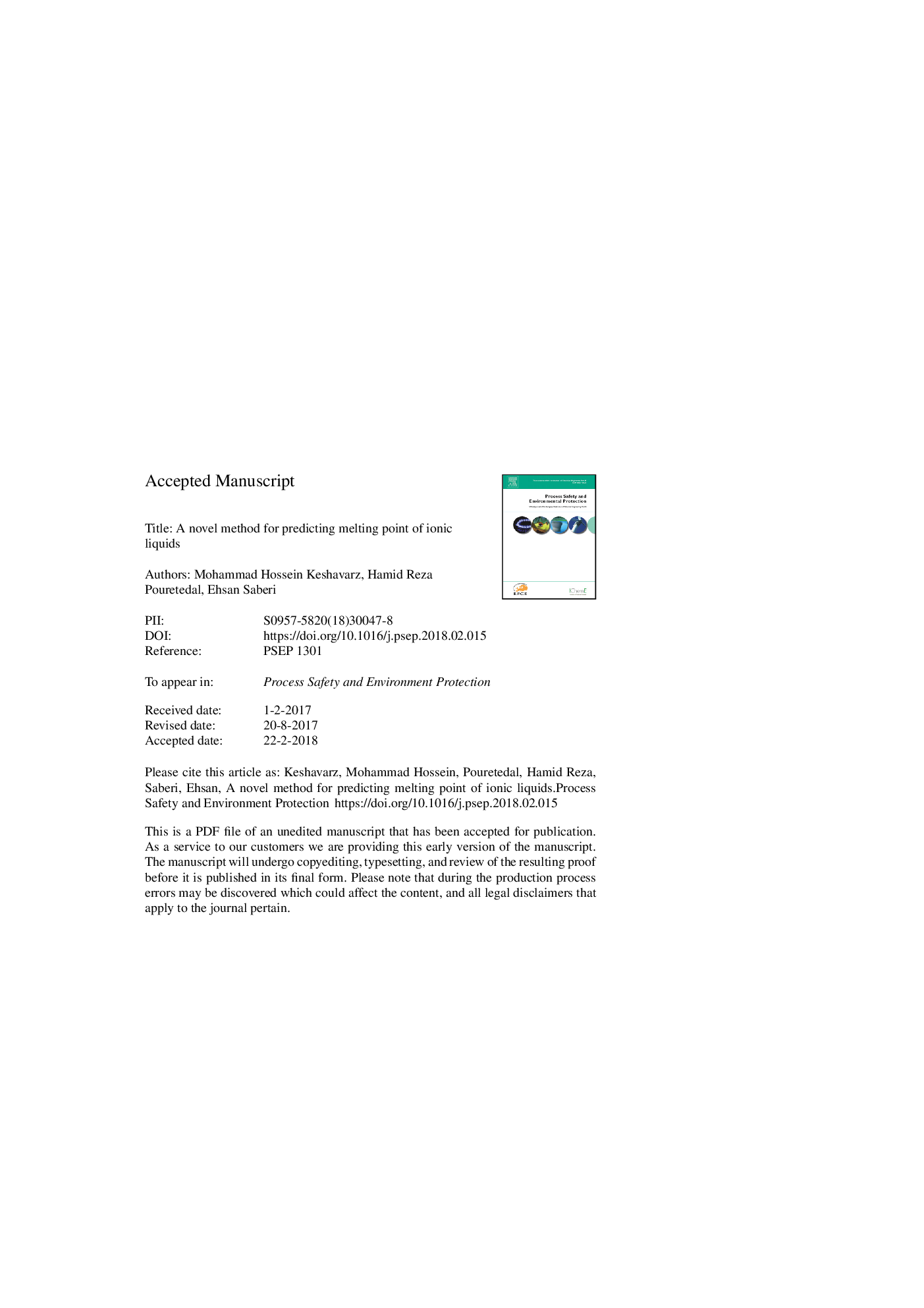| Article ID | Journal | Published Year | Pages | File Type |
|---|---|---|---|---|
| 6974082 | Process Safety and Environmental Protection | 2018 | 22 Pages |
Abstract
For industrial applications, it is important to know phase transition properties such as melting points of ionic liquids (ILs). A novel correlation is introduced to predict melting points of important classes of ILs including imidazolium-, pyridinium-, pyrrolidinium-, ammonium-, phosphonium-, and piperidinium-based ILs and different type of anions with specific cation/anion moieties. It is based only on the number of some of atoms in cationic and anionic structures as well as two correcting functions for the presence of some specific cation/anion moieties. The numbers of carbon, hydrogen and nitrogen atoms are used for cation. Meanwhile, the numbers of hydrogen, nitrogen, bromine, chlorine and aluminum atoms are applied for anion. The measured data of 195 different types of ILs were used to derive the new correlations. The calculated coefficient of determination (R2), root mean square error (RMS), mean absolute error (MAE), mean absolute percent errors (MAPEs) and maximum of errors of the new model are 0.857, 26.1Â K, 20.1Â K, 6.5 and 91.2Â K, respectively. Meanwhile, the calculated RMS, MAE, MAPE and maximum of errors for one of the best available group contribution (GC) methods where it can be applied only for 159 ILs are 53.6Â K, 35.9Â K, 11.6 and 253.6Â K, respectively. For further 48 ILs with complex structure of cations and different anions, the values of RMS, MAE, MAPE and maximum of errors for the new model is also much lower than GC method. These results confirm that the reliability of the new model is good as well as it can be applied for a wide range of imidazolium-, pyridinium-, pyrrolidinium-, ammonium-, phosphonium-, and piperidinium-based ILs with different type of anions.
Related Topics
Physical Sciences and Engineering
Chemical Engineering
Chemical Health and Safety
Authors
Mohammad Hossein Keshavarz, Hamid Reza Pouretedal, Ehsan Saberi,
